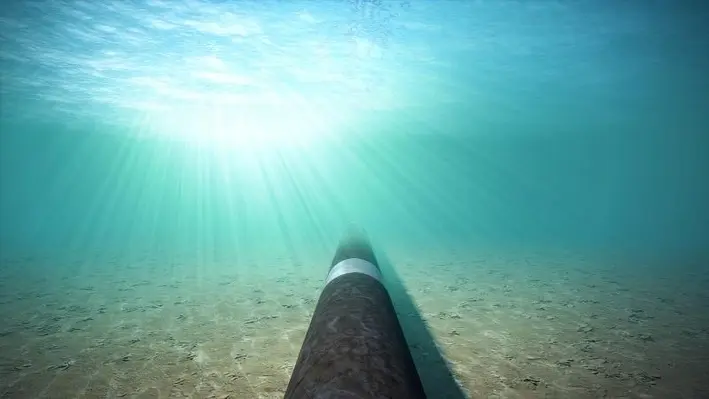
 Energy technology company Baker Hughes has announced a significant order from Petrobras for workover and plug and abandonment (P&A) services in pre- and post-salt fields offshore Brazil.
Energy technology company Baker Hughes has announced a significant order from Petrobras for workover and plug and abandonment (P&A) services in pre- and post-salt fields offshore Brazil.
The multi-year project is set to begin in H1 2025. Baker Hughes’ integrated solutions portfolio will aid with the deployment of wireline, coiled tubing, cementing, tubular running, wellbore intervention, fishing, and geosciences services across all of Petrobras’ offshore fields. The agreement also includes Baker Hughes’ remedial tool, completion fluids and production chemicals.
Maria Claudia Borras, Executive Vice President, Oilfield Services & Equipment at Baker Hughes, said, “Baker Hughes brings to this important project a comprehensive technology portfolio, a deep understanding of localisation, and a rich history of working in Brazil.
“Flawlessly integrating these capabilities will be essential to the success of the project. Our expertise in integrated solutions is the foundation for efficiently taking energy forward in Brazil.”
To support the project and help advance Latin America’s energy landscape, Baker Hughes will expand its Rio de Janeiro facilities to include coiled tubing and tubular running services to contribute to the growth of the Brazilian industry.
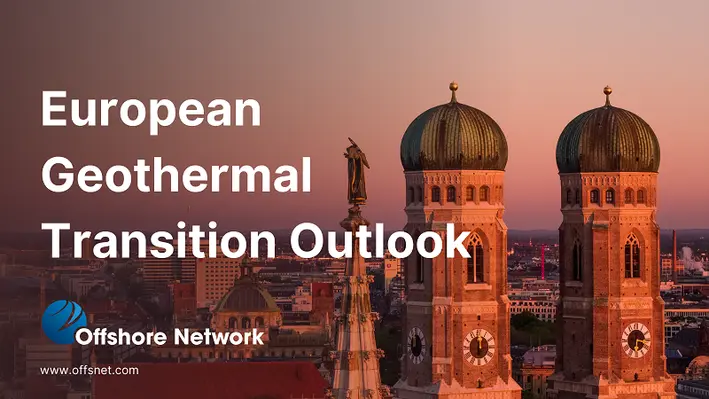
 While Europe has often spearheaded geothermal progress and innovation, the past few years have played witness to a stagnated playing field as financial blockades and unclear legislation has somewhat slowed the project pipeline. However, after funding through both private and public channels continues to gain momentum, the region has the resources and drive to become a major market player within the geothermal market once again.
While Europe has often spearheaded geothermal progress and innovation, the past few years have played witness to a stagnated playing field as financial blockades and unclear legislation has somewhat slowed the project pipeline. However, after funding through both private and public channels continues to gain momentum, the region has the resources and drive to become a major market player within the geothermal market once again.
In January 2024, the European Union Parliament overwhelmingly endorsed a resolution that called for a new geothermal energy strategy to be implemented across the region. The resolution calls for an industrial alliance on geothermal energy, as well as the installation of an insurance programme to mitigate against financial risk. This endorsement is a huge step for the region and will hopefully provide reassurance and confidence in the market to warrant further investment.
However, while the parliamentary push is a step in the right direction, concerns are still being drawn around the commerciality of the commodity for geothermal, and the debate about whether the long-term payoff and associated risks are worth the investment.
With the above issues and more industry insights set to be discussed at the upcoming GTS EU 2024 later this year, including topics around expediting growth, new technology and scalability, enhancing the transition, attracting external stakeholders and commercial considerations, the bespoke outlook offers an alternative look into the pioneering industry.
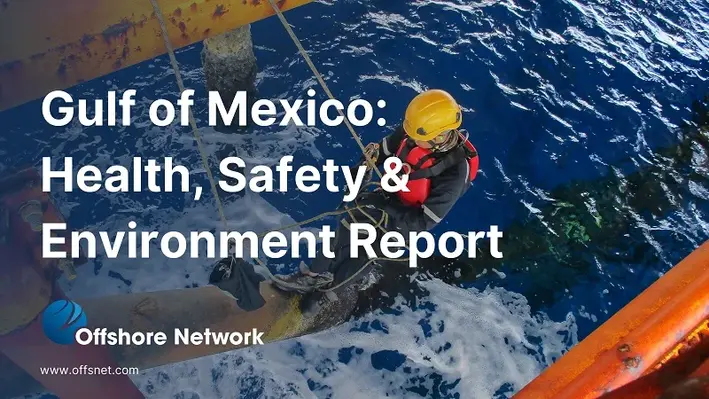

Offshore Network has released an overview on the health, safety and environment (HSE) ecosphere in the Gulf of Mexico, with a primary focus on the challenges and opportunities faced by the region’s oil and gas sector.
With Environmental Resources Management indicating that 94% of health and safety function leaders are reporting increased expectations around health and safety in the years ahead, the HSE market is undergoing intense scrutiny. Operators in the region continue to grapple with some key challenges posed by the region and the nature of the industry including the Covid hangover, getting workers on board, ageing assets and of course evolving stringent regulations – a story kick-started by the events around the Deepwater Horizon disaster.
To combat these, stakeholders are engaging in a range of best practices and deploying new technologies in order to bring their workforce together and mitigate risk for their operations moving forward.
With pertinent issues in this environment set to be discussed at length at HSE GOM 2024 later this year (key topics include: safety culture, process safety, planning & preparation, technology & innovation, and environmental safeguarding) the report provides a refreshing perspective on the market ahead of doors opening in Houston.
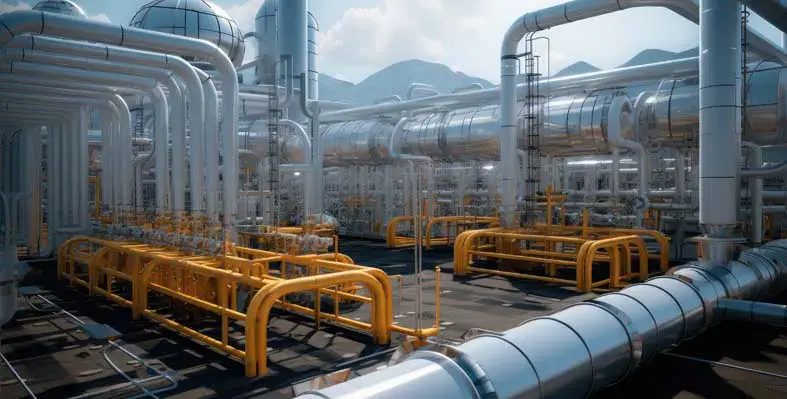
 An interdisciplinary joint project on geothermal development in Germany, AGENS has received a €44.4mn grant from the Federal Ministry for Economic Affairs and Climate Protection (BMWK), based on a resolution of the German Bundestag.
An interdisciplinary joint project on geothermal development in Germany, AGENS has received a €44.4mn grant from the Federal Ministry for Economic Affairs and Climate Protection (BMWK), based on a resolution of the German Bundestag.
Defined as the 'Demonstration of an adaptive, multilateral reservoir development for geothermal energy for seismicity and cost mitigation in the Upper Rhine Graben' that will be delivered over a span of five years, the AGENS initiative involves geopfalz, Institute for Geothermal Resource Management at ITB gGmbH, Johann Wolfgang Goethe University of Frankfurt am Main, Rhineland-Palatinate Technical University of Kaiserslautern-Landau, Ruhr University Bochum, geomecon GmbH, and the Technical University Bergakademie Freiberg.
In a sub-project of the AGENS that will be spearheaded by Stadtwerke Speyer GmbH-subsidiary Geopfalz GmbH & Co. KG in Schifferstadt city, Geopfalz will create 'Rhein-Pfalz' – the first deep geothermal duplicate, a basic building block for geothermal heat supply. This will ensure decarbonisation of the heat supply in Speyer and Schifferstadt, creating public awareness on sustainable living.
Reasearchers will also take into account the larger economic impact of the project.
With an allocation of €24.3mn, the project will look into a pioneering exploration technique, in which several side boreholes are drilled from a main borehole. The reservoir can be developed in a geomechanically and hydraulically optimised manner that reduces the risks of induced seismicity while increasing productivity.
A remaining funding of around €20.1mn will go to the other project partners.
Geo-Energie Suisse AG is an associate partner in the AGENS project. The project also involes the Federal Ministry of Education and Research (BMBF), which is supporting as part of the supplementary project LISAGENS with an additional funding volume of approximately €1.8mn to address questions of basic research.
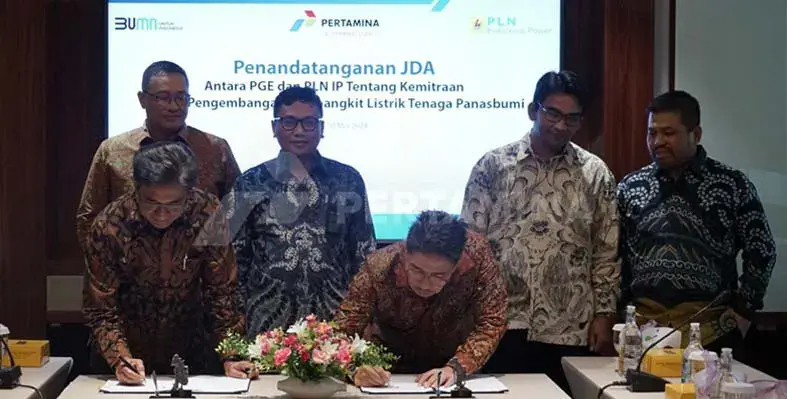
 In a drive to leverage Indonesia's vast geothermal poetntial, PT Pertamina Geothermal Energy Tbk and PT PLN Indonesia Power have signed a joint development agreement (JDA) in Jakarta to optimise the capacity of several geothermal power plants (PLTP) in the country.
In a drive to leverage Indonesia's vast geothermal poetntial, PT Pertamina Geothermal Energy Tbk and PT PLN Indonesia Power have signed a joint development agreement (JDA) in Jakarta to optimise the capacity of several geothermal power plants (PLTP) in the country.
This JDA comes after the joint development study agreement (JDSA) that the companies signed in February.
Julfi Hadi, President Director of PT Pertamina Geothermal Energy Tbk, said, "The signing of this JDA demonstrates our strong commitment to increasing the utilisation of Indonesia's abundant geothermal resources to support the acceleration of the national energy transition, achieve the government's commitment to the Enhanced National Determined Contribution (NDC), and the Net Zero Emission programme in Indonesia. We believe this cooperation will accelerate the development of more efficient and sustainable geothermal projects as one of PGE's strategic efforts to achieve 1 GW in the next two years."
The JDA primarily aims to develop co-generation projects in two geothermal working areas. The approach will involve utilisation of brine or hot water from steam separation, to stimulate electricity production.
The initial target for the PLTP Co-Generation (Binary Plant) development is in the Ulubelu Binary Unit and Lahendong Binary Unit PLTP areas, potentially adding 30 MW and 15 MW of installed capacity, respectively.
Noting that the initiative can increase PGE's installed capacity by up to 230 MW, Hadi said, "This JDA allows us to focus on increasing electricity capacity and accelerating geothermal energy development as part of the national energy transition strategy. By applying principles of operational excellence, we ensure that every stage from development to project operation is carried out efficiently and with the highest quality, thereby increasing the use of renewable energy."
Following the success of the JDA, the PGE and PLN IP will soon make effective a power purchase agreement (PPA). "We hope this JDA can serve as an example for other renewable energy projects in Indonesia. With strong synergy and collaboration, we can achieve our goal of creating a more sustainable energy future," Hadi said.
Also present at the JDA signing was Norman Ginting, Project and Operations Director of Pertamina New & Renewable Energy (Pertamina NRE), who appreciated and hoped that this collaboration and synergy could continue. "Today, Pertamina through PGE and PLN through PLN IP have successfully signed a JDA as an important milestone for geothermal development. Pertamina NRE highly appreciates this step and hopes that in the future, these two important national energy SOEs can collaborate and synergise to drive more massive decarbonisation," Ginting said.
Vice President of Corporate Communication of PT Pertamina (Persero), Fadjar Djoko Santoso, said, "Geothermal development is an effort to support the Government in achieving the national energy mix target and also Pertamina's effort in developing New Renewable Energy."
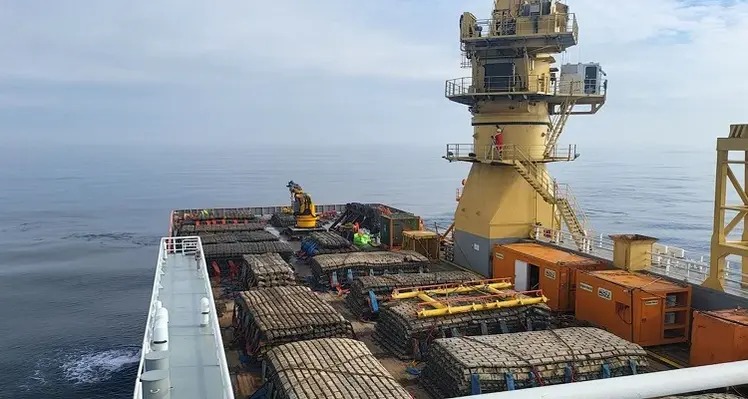

DeepOcean, an ocean services provider that is dedicated to enabling the energy transition and sustainable use of ocean resources, has been awarded a significant recycling project on the UK continental shelf.
Provided by an unnamed international operation, the contract will see DeepOcean oversee project management and engineering operations for a comprehensive campaign that will span more than 120 days. With offshore decommissioning activities scheduled this year, the project is segmented into five sub-campaigns including the recovery of concrete mattresses, spools, flexibles, flowlines, jumpers, suction anchor, multiple structures and final debris clearance with the addition of a subsea rock installation campaign to conduct final seabed remediation.
Gary Scott, UK Commercial Manager & Legal Counsel at DeepOcean, commented, “We are delighted to have been selected to perform this decommissioning project and this contract award reflects our team's proficiency in executing complex subsea projects with a focus on safety, environmental responsibility, and efficiency.”
To execute the workscope, DeepOcean has stated that it will employ its advanced fleet including the Edda Freya, a state-of-the-art vessel suited for operations worldwide. The ship will utilise its 2,300 sq m of deck space and 400Te AHC crane, with two moonpool launched 220 HP Kysdesign WROVs. The Normand Jarstein will also be deployed.
As outlined by DeepOcean, upon successful recovery, all items will be transported and offloaded onshore for appropriate reuse, recycling, or disposal, adhering to stringent environmental regulations. Through close collaboration with DeepOcean’s selected waste management contractor, reuse options for all concrete mattresses will be sought, demonstrating our commitment to the environment and needs of our client with a continued focus to maximise re-use for all recovered materials.
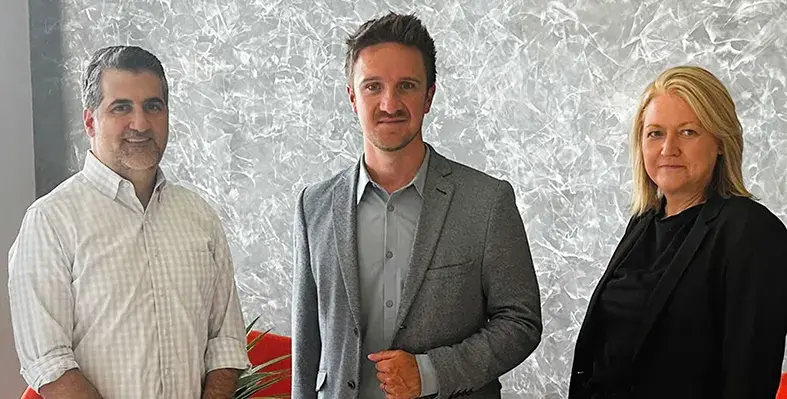
 Applicable by a significant master services contract from decommissioning specialist Promethean Energy, wells expert Elemental Energies will be aiding the decommissioning of nine orphaned wells in the Gulf of Mexico.
Applicable by a significant master services contract from decommissioning specialist Promethean Energy, wells expert Elemental Energies will be aiding the decommissioning of nine orphaned wells in the Gulf of Mexico.
In February, Elemental Energies provided well management services for the plugging and abandonment of wells in the Matagorda Island area, off the Texas coast.
The five-year contract to decommission orphaned offshore wells in the region was awarded to Promethean by the Department of the Interior’s Bureau of Safety and Environmental Enforcement (BSEE).
Elemental Energies’ Julie Copland, Head of Decommissioning and Low Carbon, said, “We're thrilled with this award as it marks a significant expansion of our efforts in the Gulf. Our rich history in decommissioning, uniquely equips us to address the Gulf's orphaned wells, applying our expertise to mitigate environmental risks, navigate complex regulations, and reduce the associated OPEX of decommissioning work. This project and partnership is a testament to our commitment to meeting evolving industry standards and safeguarding our environment."
The contract is partially funded by the Bipartisan Infrastructure Law through a US$64mn commitment to address orphaned oil and gas wells on public lands.
Steve Louis, SVP Decommissioning for Promethean Energy, said, “We at Promethean are delighted to have Elemental Energies as a strategic partner, as we work with the federal government and others to deliver these projects of strategic importance to the nation’s environmental stewardship and energy security. Elemental’s well engineering expertise is an important component of our comprehensive wells management capability as an operator of mature assets and their decommissioning.”
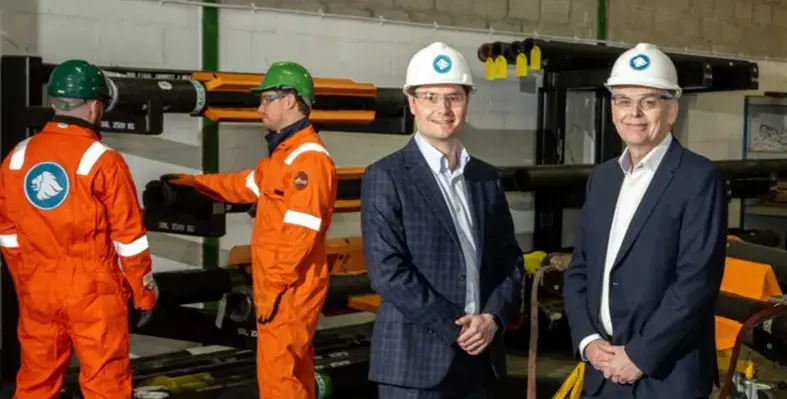

Energy services provider Expro has landed a significant milestone with the 100th deployment of its cementation technology SeaCure; this time for a five-well subsea batch campaign in Australia.
An exclusive offering on cementing portfolio, SeaCure technology was originally developed by DeltaTek, which Expro acquired last year. While the acquisition widened Expro’s technology portfolio in the well construction cementing sector, it also unlocked global access for DeltaTek. Recently, Expro completed the acquisition of integrity and intervention specialist, Coretrax, as well.
SeaCure helped maintain the quality primary cementation of the conductors, eliminating major risks associated with cement slurry placement.
A proprietary stabbed-in inner string technique was involved in post-cementing circulation via the inner annulus until slurry curing was complete. This ensured reliable installation of the top holes.
Alistair Geddes, Expro’s Chief Operating Officer, said, "Reaching our 100th global SeaCure job is a testament to the dedication and expertise of our team, as well as the strength of our technology and solutions. We are proud of providing the platform for Tristam Horn and the legacy DeltaTek to expedite their growth journey and quest for providing innovative solutions to our clients.
“Ineffective cementation is one of the single biggest contributors to cost over-runs, poor life of well integrity and ultimate failure of well objectives. Expro’s robust Cure portfolio has been developed to solve many of the issues associated with cementing subsea wells with the aim of delivering first time ultimate cement placement. SeaCure is an example of Expro’s commitment to investing in innovation, developing new technologies and delivering value and excellence to our clients globally."

 Colorado-based company, Gradient Geothermal, has announced it has received funding from the state Energy Office’s Geothermal Energy Grant Program for the execution of a landmark feasibility study in Pierce, Colorado.
Colorado-based company, Gradient Geothermal, has announced it has received funding from the state Energy Office’s Geothermal Energy Grant Program for the execution of a landmark feasibility study in Pierce, Colorado.
The project will aim to test the viability of establishing a thermal energy network for the town of Pierce through heat extracted from local inactive wells. If successful, the project has the potential to transform the energy stability for communities in need while bolstering Colorado’s long-term economic outlook.
During the study, Gradient will analyse if the use of hot water after electric power generation via inactive wells in the Pierce Field can be channelled into a direct use thermal network for Pierce residents.
Dr. Benjamin Burke, Chief Executive Officer at Gradient Geothermal, said, “Gradient Geothermal is excited to help bring geothermal energy and power generation to Pierce Field, Colorado. We have a prime opportunity to bring new life to a mature oil field.
“Pierce can be a world-class ‘geothermal garden’ where both heat and electricity from geothermal power benefit the entire town and provide jobs for a workforce familiar with oil and gas.”
Governor Jared Polis commented, “Geothermal energy, the heat beneath our feet, is an underutilised resource that can save people money on energy and improve air quality. Colorado is already a national leader in low-cost renewable energy, and now with these grants, we are supporting more geothermal energy across the state.”
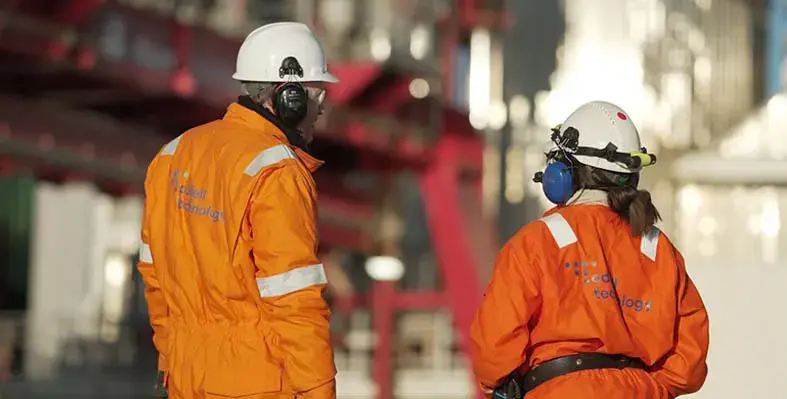
 Aberdeen-based Odfjell Technology Ltd has solidified is plug and abandonment (P&A) and slot recovery range with a £3mn-acquisition of McGarian TDC Ltd.
Aberdeen-based Odfjell Technology Ltd has solidified is plug and abandonment (P&A) and slot recovery range with a £3mn-acquisition of McGarian TDC Ltd.
This acquisition will advance Odfjell’s Well Services division, and add to the company's 20 years of experience in designing whipstocks, casing and packer milling, fishing and remedial products.
Representing as much as 45% of an asset’s decommissioning costs, the P&A market is at a dynamic stage right now.
Odfjell Technology boasts of a completely integrated service for P&A campaigns using innovative operational models for the challenges of different well constructions, varying downhole geologies and adjacent infrastructure.
Odfjell Technology AS CEO Simen Lieungh said, “We are delighted to welcome McGarian TDC Ltd to the Odfjell Technology family. Their engineering and product design capability perfectly complements our existing competencies.
“P&A represents a significant investment for our customers involved in of end-of-life operations. Our aim has always been to provide an efficient service with a focus on safety and environmental security – this strategic acquisition enables us to further strengthen that commitment to our customers.”
Bruce McGarian, Owner of McGarian TDC Ltd, added, “Joining forces with Odfjell Technology presents an exciting opportunity for us to leverage our expertise on a larger scale.”
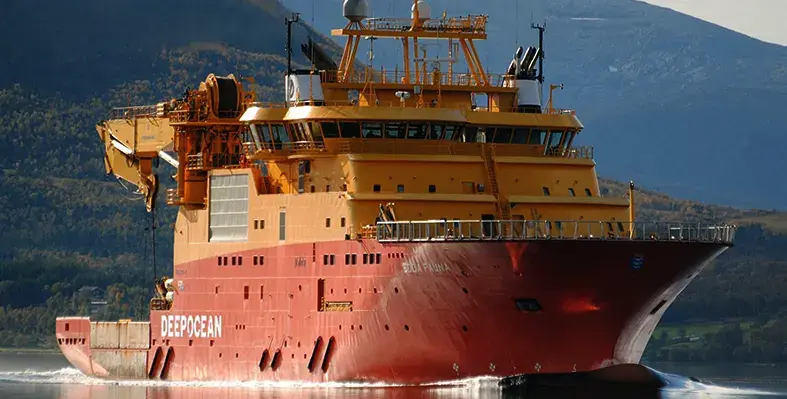
 Equinor has awarded DeepOcean a four-year frame agreement for marine services that includes subsea intervention and repair contingency for subsea pipelines, structures and high voltage cables for not only oil and gas fields but also offshore renewables.
Equinor has awarded DeepOcean a four-year frame agreement for marine services that includes subsea intervention and repair contingency for subsea pipelines, structures and high voltage cables for not only oil and gas fields but also offshore renewables.
The agreement comes with a scope for extension up to another four years.
Geographically the agreement is valid for work on the Norwegian continental shelf and internationally for planned Equinor work and for contingency work for the PRSI pool members, which comprises 23 energy companies that cover their offshore pipeline and power cable repair contingency via the pool.
The contract delivery will be managed by DeepOcean from its Haugesund-based office in Norway.
“Such a long-term agreement allows us to constantly evolve working methods, collaboration models and technologies, with the objective of making offshore operations and subsea cable repair work as cost-effective as possible. We look forward to supporting Equinor and the PRSI Pool members over the coming years,” said Olaf A Hansen, Managing Director of DeepOcean’s European operation.
For work in the offshore oil and gas industry, the frame agreement covers planned or unplanned marine services using remote operated intervention methods with or without the use of PRS equipment.
Under the agreement, DeepOcean is also expected to be equipped to produce multiple engineering or preparedness studies as requested by Equinor or PRSI pool members.
“DeepOcean has a 400 people-strong engineering team that are specialists on solving subsea challenges across industries. We are industry agnostic and share learnings and experiences from subsea operations across different types of operations and industries in order to develop the best possible solutions for our clients. Our experience from oil and gas is highly valuable for offshore renewables – and vice versa," said Normann Vikse, Offshore Renewables Director at DeepOcean.
DeepOcean has already received the first call-offs for work under the new frame agreement.
On behalf of Gassco and Equinor, DeepOcean will perform seabed preparations and complex remote hot tap tie-in operations at three different locations on the Norwegian continental shelf. Hot tapping is a method of connecting to a pressurised system, such as a pipeline, without removing the pipe from service.
On behalf of Gassco with Equinor acting as technical service provider, DeepOcean has already performed marine services to support baseline inline inspection of a large sized pipeline.
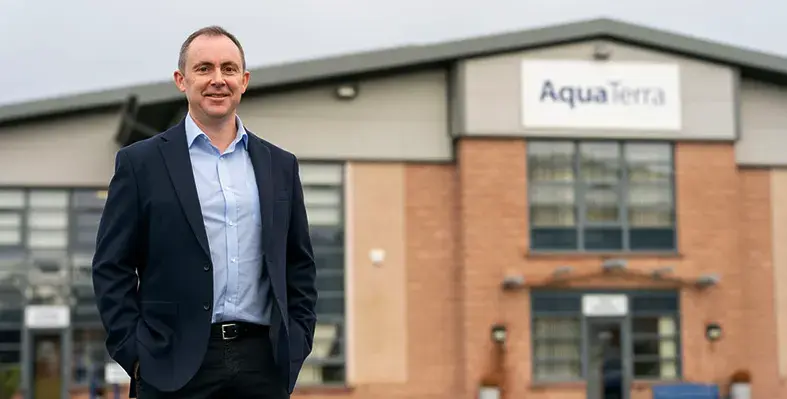
 An integrated service provider from Aberdeenshire, AquaTerra Group has announced four decommissioning contract wins that add up to a seven-figure sum.
An integrated service provider from Aberdeenshire, AquaTerra Group has announced four decommissioning contract wins that add up to a seven-figure sum.
The last year has marked several firsts for the Group, including the first time that the company was subcontracted by Dutch offshore contractor, Allseas. Under the contract, AquaTerra supported an EPRD project on Enquest’s Heather Alpha platform. It provided engineering, fabrication, access, and construction teams to complete underdeck preparation scopes for topside removal.
Also for Allseas, AquaTerra removed underdeck obstructions in preparation for the topside removal of TAQA’s Cormorant Alpha platform. This was followed by a subcontract from Wood, which involved further work on the same platform.
By utilising its lifting and rigging equipment and services, including its modular suspended access platform QuikDeck, AquaTerra also won its first decommissioning contract with another operator to support conductor decommissioning.
Stephen Taylor, Managing Director of AquaTerra Group, said, “The team and I are delighted that we were selected by Allseas through what was a competitive tendering process for the Enquest and TAQA projects. This is also the first time that we have worked with Wood in several years, so it is great to be supporting them again.
“We’re tendering for more big projects than we’ve ever tendered for before in decommissioning, and this is already paving the way for us achieving our target of £14 million turnover in 2024.”
Page 48 of 111